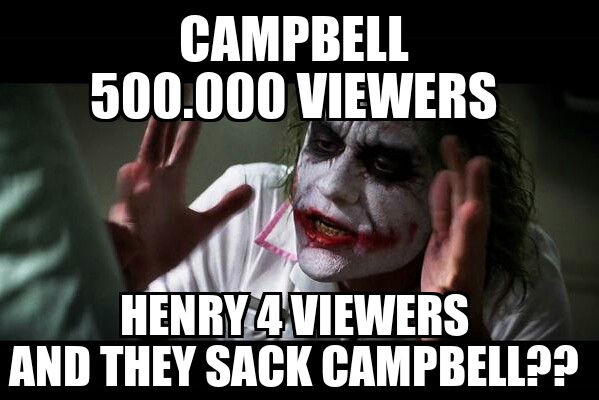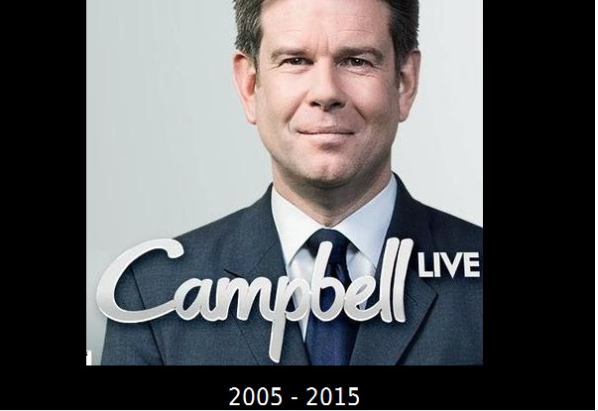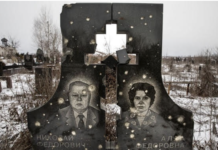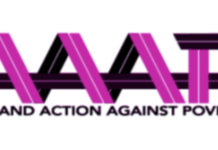The last episode of Campbell Live on May 31 was more than a sad departure; it signalled the end of prime time current affairs on television. Outside of the Māori channel, infotainment content prevails, regardless of viewer concerns. For the programme in question, this was death by poisoning; although no single perpetrator can be identified. The case resembles a murder mystery in which vested interests with clear motives deny culpability. An unfortunate course of events, a regrettable outcome, but time to move on. The poison itself can be clearly identified: financialized media ownership laced with private equity, a fatal concoction for well-resourced current affairs shows. When Campbell Live’s fate was revealed, Mediaworks and their apologists cited terminal ratings decline. Nothing premediated, no political agendas, just death by natural causes. Like an old age pensioner, Campbell’s days were numbered; time to start anew. Later revelations contradicted the official spin. Nationwide support for the beleaguered broadcaster drove up ratings relative to the newly-hyped Paul Henry Show and TVNZ’s Seven Sharp. New Zealand Herald journalists found that Campbell Live’s Mazda sponsorship deal had not been fully renewed, even as Mediaworks claimed that the programme’s future was undetermined. On May 23, Matt Nippert and Wayne Thompson reported that “Mediaworks management viewed Campbell Live’s crusading journalism as a liability that stretched viewer patience”. They described ongoing coverage of the Pike River explosion as a cause of viewer “fatigue” and criticized the emphasis given to “the aftermath of the Christchurch earthquake”, “GCSB spying”, and “child poverty” (‘Campbell’s Crusades irked TV3 bosses’). These issues of complaint have three common attributes. They have been embarrassing for the Government, insufficiently addressed by the Labour Party, and drivers for the Save Campbell Live campaign. Clearly, Mediaworks claims about the importance of ratings figures and the onset of viewer ‘fatigue’ ring hollow. Campbell Live’s numbers were improving and public engagement with the show was increasing during the final weeks.
What, then, possessed the board of Mediaworks to kill their news brand? This question raises another. Who owns TV3 and what are their objectives?
The story begins with the deregulation of broadcasting and the transnational corporate takeover of private media organizations. Four pivotal events initiated this process: the restructuring of Television New Zealand and Radio New Zealand into dividend-generating state-owned enterprises (1989); the entry of TV3 and pay television (1989); the sale of Telecom (1990); and the lifting of all restrictions on foreign media ownership (1991). The entry of TV3 as a regionally-based national network was initially unprofitable, and local shareholders went bankrupt. As of 1994, the new principal shareholders were: Canadian media conglomerate Canwest (10%); Westpac (48%); and an official receiver (32%). From then on, relentless competition between TVNZ and TV3 for the advertising dollar squeezed news and current affairs budgets. Canwest was then Canada’s largest media conglomerate with film, television and other offshore holdings in Ireland, Northern Ireland, United States and Australia. Between 1994 and 1996, it assumed control of the consortium which was running TV3. In 1997, Canwest established TV4 (six years later this was relaunched as the music video channel C4). Also in 1997, Canwest began to make extensive radio acquisitions. In July, it purchased More FM’s eight-station radio network for NZ$33m. By December 2000, Canwest had purchased More FM’s parent company, Radioworks. Its stable included Radio Pacific, the Edge, the Rock, and Solid Gold networks, plus 22 other local stations. Further acquisitions of Gisborne Media, Queenstown’s Q92 FM, including six frequencies, plus two Marlborough stations eventually expanded Canwest’s New Zealand holdings under the rubric Mediaworks.
Campbell Live began on 21 March 2005 with Carol Hirschfield as producer. The show was always a hybrid; issue-driven stories co-mingled with lighter infotainment pieces, advertising breaks and programme sponsorship. Through it all, a real national presence developed in contrast to the Auckland-centric Holmes Show and, more recently, Seven Sharp. On Campbell Live, a public interest ethos drove stories about dirty lakes, air pollution, unhealthy fish shops, fake drivers licences, conditions in resthomes, New Zealand Residency scams, low-wage cleaners in Parliament, struggling schools, overcrowded homes, and family survival. Interviewees spoke straight to camera minus the elaborate formatting typical of reality TV shows. Campbell Live’s resilience in a non-public service setting was truly remarkable. Canwest’s support of the show followed the classic North American model of commercial television. Every successful network required a high profile news brand and news presenter to push prime time ratings. John Campbell was TV3’s major identity and investment. However, this situation changed quickly. In 2007, Canwest’s 70% stake in Mediaworks was sold to HT Media as a subsidiary of Australian private equity group Ironbridge Capital for NZ$790m. This exemplified a new phase in the transnational colonization and commercialization of domestic media. Financialization had entered the bloodstream. Here, Matt Mollgard and Bill Rosenberg made the following observation:
Given our general concerns about transnational media ownership, the question arises; what worse could these private equity corporations do? The answer that they introduce a further degree of commercialization of the media. They are typically investing for at most 3.5 years – often shorter, if an attractive offer comes along. They may have no interest in any particular industry or sector as long as they can see opportunities for profit
(Mollgard and Rosenberg, 2010).
Accordingly, Ironbridge Capital’s media investments within New Zealand were complemented by holdings in environmental waste management and a major resthome chain. After the September 2008 financial collapse, global recession and falling advertising revenues raised concerns about Mediaworks’ financial position. In the year to 2009, it posted an NZ$314m loss. In mid-2012, Mediaworks’ debt restructuring involved two new major debt holders – TPG Capital and Oaktree Capital Management. The latter group brought NZ$125m of Mediaworks debt from the Royal Bank of Scotland and the BNZ. By late 2013, Mediaworks was owned by Oaktree Capital (26.7%), Royal Bank of Scotland (21.9%), TPG Capital (15.7%), Westpac (14.6%), Raybo Bank (14.6%); and JP Morgan (6.5%). Oaktree Capital raised its ownership stake to 43% in 2014 and 77% in April this year. With these developments, Campbell Live was in mortal danger; short-termist, financial imperatives required a new business model for TV3. Julie Christie, Mark Weldon and other Mediaworks managers favoured multi-platform broadcasting, low-cost reality TV shows and infotainment programmes with a skeletal staffing structure. The phrase ‘current affairs’ would be maintained to obscure the objectives of restructuring and to taint Campbell Live’s accomplishments as a dated, fatigue-inducing form of the genre. Will the new business model work? In the short-term probably not, but this is beside the point. Oaktree’s likely objective is to squeeze revenue from its more profitable radio holdings while selling off the television assets, if a willing buyer can be found.
Against this background, the coroner’s verdict is clear. In a commercially-saturated mediascape, issues-based current affairs has died; a species poisoned by the financialization of media ownership at a politically convenient time. Campbell Live was the last of the species – RIP.
References
Mollgard, M. & Rosenberg, B. (2010). Who owns radio in New Zealand? Communication Journal of New Zealand, 11(1), 85-107.
JMAD/Journalism Media and Democracy (2012, 2013, 2014). New Zealand Media Ownership Reports (free online).







boycott keytv and keynewspapers we don’t need them the standard and dailblog are better reading
The answer for NZers is to stop watching TV. All of it.
Many of us have stopped. We get our media online.
I see business models focussed on what business owners THINK customers want, and focussed on very short term goals, often fail.
They don’t focus on a product with quality that is long term. So eventually consumers get pissed off and stop buying.
Just like built in obsolescence for physical products turning consumers off in many cases, rubbish shallow TV will turn consumers off too.
Anyway, that’s my opinion.
I mostly agree with your opinion and haven’t watched a TV channel for around 3 years myself. The only thing I’m not convinced of is the obsolescence of rubbish shallow TV like the reality shows (which I can’t watch anyway because they make my eyes bleed). Rubbish shallow TV commands a surprising following, whereas those who treat accurate current affairs information as important are (at least in part) getting it from other than TV news bulletins. The rubbish shallow TV watchers evening is irritatingly interrupted by news and current affairs on which they nevertheless base their entire world view. This is the context in which their business model is formed, and it serves the interested parties well. How else could National become the government?
A very good and well researched piece. Unfortunately, as we all know, in commercial broadcasting ratings equals revenue equals survival. Whatever the real reason for the show’s demise the reality was that the ratings did not increase until the show was at risk of being terminated. There was no guarantee the audience would remain if the show continued. Ratings are about giving people what they want, not what we think they should have. Today, most people in TV3’s target demographic want reality TV rubbish. A public service TV channel not reliant on ratings is the only answer.
Thanks for a well researched contribution.
The next issue to address is what has not been good enough at our nationally owned TV channel and what can be done about it.
>> By late 2013, Mediaworks was owned by Oaktree Capital (26.7%), Royal Bank of Scotland (21.9%), TPG Capital (15.7%), Westpac (14.6%), Raybo Bank (14.6%); and JP Morgan (6.5%). <<
So the conglomerate that owns TV3, and just killed Campbell Live, is directly owned by a handful of banks. It's not even a banking conspiracy, it's right there in plain sight!
…and what about the links between an ex-banker PM, USA, politically appointed
managershatchetmen and women at Mediaworks?An excellent and well researched blog Wayne, thanks for that.
I guess the question I would ask is, is there any way to “definancialise” broadcasting, or at the very least buy out TV3?
Anyone got any spare change?
EASY. Put the tax back on the rich that was CRAZILY removed by JK (when we couldn’t afford it, and which has caused our National debt to expand like a bubble and grow exponentially because of it) and that’ll leave plenty of spare cash to do good for multiples more Kiwis than the tax cut for the rich.
!00% right Kevin.
It’s incredible that doing the screaming out loud obvious causes these w@nkers: Natsis, Labour and potentially the Greens now to have an attack of paralysis!
Thanks Wayne for the info and history lesson.
Corporate take over of our governments.
Corporate take over of our resources.
Corporate take over of our media. What else is new ?
A government in bed with these corporations with secret funds flowing.
Democracy is an illusion and barely awake these days with all the secret meetings and under the table dealings. People are turning away from their governments and their local media as they know of the shady operations and self serving agendas. It is a sign of the times and it is a disgrace that these govts./corporations have gained so much control and power.
Greed takes over and we leave TV behind as we flock to the internet.
Anyone know if Netflix has RT.COM ? Any problems with Netflix or is their something better to replace Sky with ?
Thanks for this review of how we got here Wayne, very interesting. We have to face the fact that there is no Publice Service media anymore:
– it’s not funded by the Govt and it would take a very radical Govt to reintroduce it,
– private media ownership is not going to deliver it.
Indeed both of the above actively conspire to prevent it.
So seems to me we have two options:
1. Lobby for re-introduction of Public Service media – this is the approach of the Coalition for Better Broadcasting. This will require Govt. support so will need buy in from Labour and Greens at least, and of course they need to get into Govt. So a long and difficult road, but good luck to them. But then if Govt changes it risks being rolled back again.
2. Start a new media organisation that is not under Govt. or Corporate control, some sort of trust structure, subscriber/supporter based along with advertiser. Internet based with content delivered to TV (via Chromecast & Apple TV etc.), Computers and Smartphones. This is now a much better content delivery system than radio, newspaper or broadcast TV.
The hard part is building the brand and getting known, but the advantage is tailored distribution to suit individual needs, range of formats (words, audio & video). Would need some strong people to front it, like say John Campbell, Carol Hirshfield and Julian Wilcox perhaps?
I really think we are at a cross roads where Media ownership has shut out traditional media channels from decent Journalism, but technology is opening up whole new ones that are actually much more exciting, especially if you add in viewer engagement and citizen journalism.
Read the Greens broadcasting policy. Public owned politically independent radio and tv, commercial free tv statuon, local programme quota including documentaries, additional funding viafrequency licensing system, …
I’m saying that any policy based on traditional TV stations feels outdated, technology has overtaken this type of distribution. The best model is to be outside both Govt and Corporate control and that now seems possible.
Yea but you look at the Labour review of why Labour lost the last election (on the news tonite) and it is largely an own goal (even forgetting Cunliffe gaffed again)
Did you mean Rabobank? Isn’t the Mike Hosking’s show Seven Sharp sponsored by Rabo Bank? Does this have another element involved?
Oh and have people seen what has happened to the Listener music reviewer?
Comments are closed.